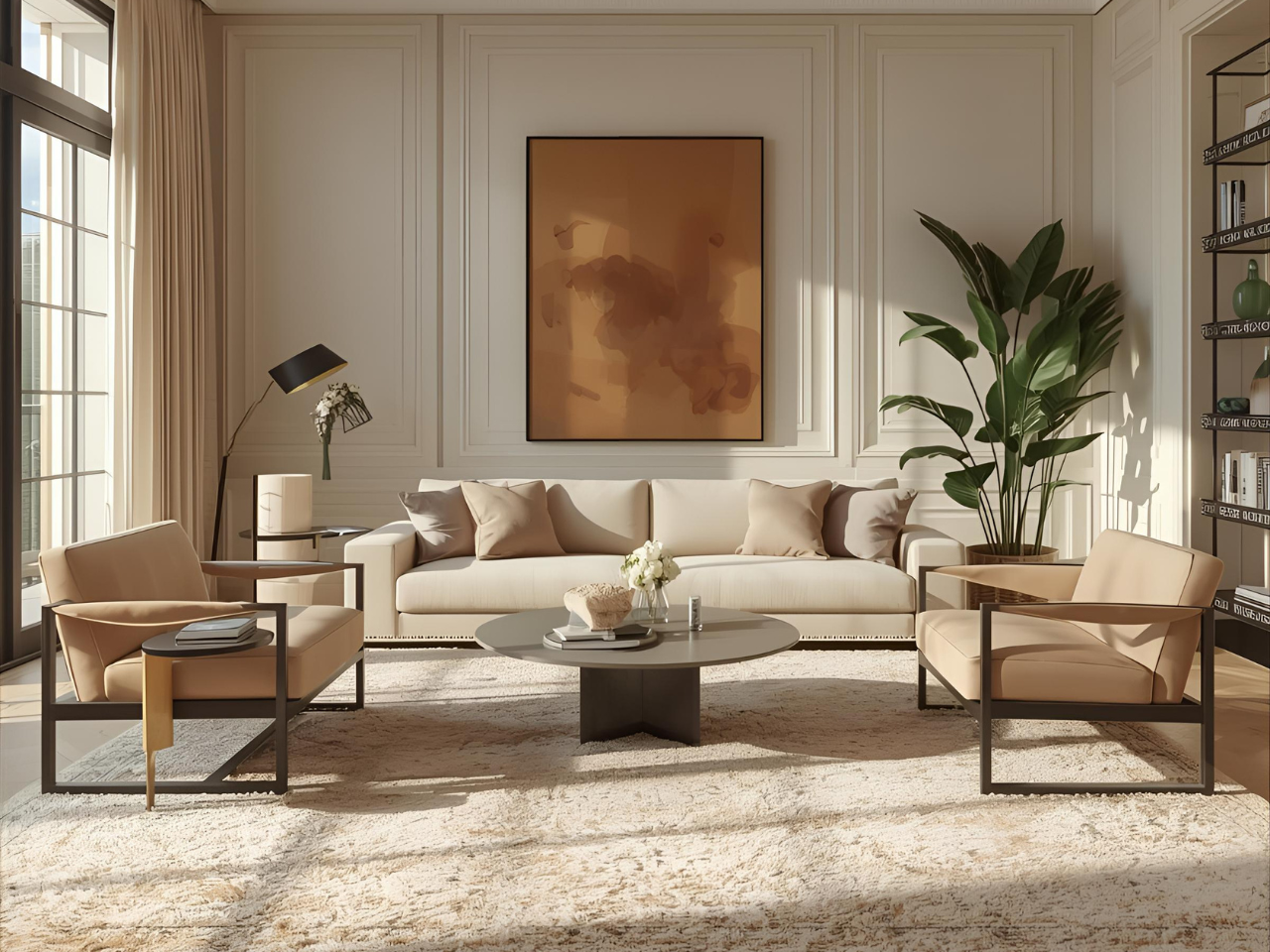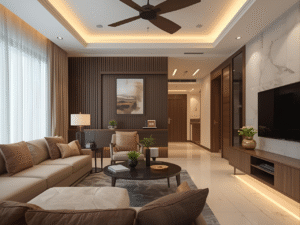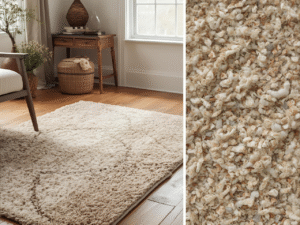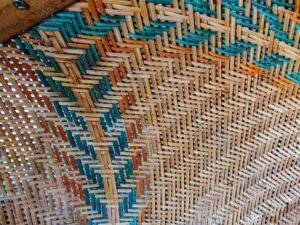A well-chosen rug does more than just decorate a floor—it anchors a room, defines a space, and sets the tone for your entire home. It’s an investment piece that can transform an ordinary room into a sanctuary of style and comfort. Top interior designers understand this power and are incredibly selective about where they source rugs and carpets.
The right source ensures quality, authenticity, and a design that truly sings. This guide will pull back the curtain on the industry’s best-kept secrets, revealing where designers shop and how they select the perfect pieces for their clients’ dream homes. Whether you’re a homeowner looking to elevate your space or a design enthusiast eager for insider tips, you’ll learn how to buy rugs and carpets like a pro.
Why the Right Source Matters
Sourcing a rug isn’t as simple as finding a pattern you like. For a top interior designer, the “where” is just as important as the “what.” The choice of supplier impacts everything from the final look to the longevity of the piece.
- Quality and Durability: A reputable seller guarantees the quality of the material, weave, and finish. Designers look for rugs that can withstand foot traffic and retain their beauty for years. Sourcing from a trusted store means you’re investing in craftsmanship, not just a fleeting trend.
- Authenticity and Craftsmanship: The market is flooded with imitations, especially when it comes to luxury pieces like handmade silk or wool rugs. Established showrooms and specialized boutiques offer genuine, artisan-crafted rugs, ensuring you get the authentic piece you’re paying for.
- Value for Money: An expert source helps you balance budget with design impact. They can guide you toward pieces that offer the best value, whether it’s a statement-making luxury rug for the living room or a durable, stylish option for a high-traffic area.
- The Designer’s Vision: How a rug is sourced directly influences the final design. A custom-made rug can perfectly match a unique color palette, while a vintage find from a local market can add a layer of history and character that can’t be replicated.
Top Secrets for Buying Rugs and Carpets
Before you even think about where to shop, you need to think like a designer. Arm yourself with these foundational secrets to make a confident and informed choice.
Know Your Space
First, consider the room’s size, layout, and function. A living room rug should be large enough to sit under the front legs of your sofas and chairs, creating a unified seating area. In a dining room, the rug should extend beyond the chairs, even when they’re pulled out. For high-traffic areas like hallways, prioritize durability.
Master the Materials
The material affects a rug’s look, feel, and durability. Here’s a quick rundown:
- Wool: A designer favorite for its softness, durability, and natural stain resistance. Ideal for living rooms and bedrooms.
- Silk: Known for its luxurious sheen and fine texture. Best for low-traffic areas where it can be admired as a piece of art.
- Jute & Sisal: These natural fibers offer a rustic, earthy texture. They are durable and affordable but can be coarse underfoot.
- Cotton: Soft and often more affordable, cotton rugs are great for casual spaces. They are typically easier to clean, making them a good choice for kitchens or kids’ rooms.
- Synthetics (Nylon, Polyester): These are highly durable, stain-resistant, and budget-friendly, making them perfect for high-traffic zones or homes with pets and children.
Match Pattern and Style
Your rug should complement your home’s existing style.
- Traditional: Think Persian or Oriental designs with intricate patterns and rich colors.
- Modern: Look for geometric patterns, abstract designs, or solid colors.
- Transitional: This style blends traditional and modern elements for a timeless look.
Consider Customization
If you can’t find the perfect rug, have one made. Many top interior designers work with custom rug makers to create bespoke designs that perfectly match a room’s dimensions and color scheme. This ensures a truly unique and tailored finish.
Where Do Top Interior Designers Buy Rugs and Carpets?
Designers cultivate a diverse list of suppliers to find the perfect rug for any project. Here are their go-to sources:
- Luxury Showrooms: High-end showrooms like The Ambiente in Delhi offer curated collections from leading designers and artisans. These spaces are treasure troves for premium, handcrafted silk and wool rugs that serve as foundational art pieces. They provide expert guidance and a first-hand look at exceptional quality.
- Specialized Rug Boutiques: These smaller stores often feature unique, artisan-crafted pieces that you won’t find anywhere else. They are perfect for sourcing one-of-a-kind rugs with a compelling story.
- Online Carpet Stores: Retailers like Jaipur Rugs and The Rug Republic have made it easier than ever to buy rugs online. Their extensive collections can be filtered by size, material, color, and style, offering convenience and variety.
- Local Markets & Handloom Hubs: For authentic, traditional pieces, designers often explore local markets. These hubs offer a direct connection to craftsmanship and an opportunity to find vintage or handmade rugs at a great price.
- Custom Rug Makers: When a project demands something truly specific, designers turn to custom makers like Obeetee Carpets. They can translate a unique vision into a tangible, made-to-order rug that fits the space perfectly.
Insider Shopping Tips from the Pros
Ready to shop? Keep these final tips in your back pocket to ensure you’re making a smart purchase.
- Always Ask for Swatches: Colors can look different online or in-store. Request a small sample to see how the rug’s colors and texture work in your home’s lighting.
- Check the Details: For handmade rugs, examine the knot density and pile height. A higher knot count usually indicates better quality and durability. Check the finish on the back to ensure it’s well-crafted.
- Compare Prices: Don’t be afraid to shop around. Compare prices for similar styles between different stores and online retailers.
- Consider Layering: A classic designer trick is to layer rugs. Place a smaller, more decorative rug over a larger, neutral one (like jute) to add depth, texture, and visual interest.
- Inquire About Maintenance: Before you buy, ask about care and cleaning. Understanding the upkeep will help you keep your investment looking its best. For budget-friendly options, retailers like Carpet Kingdom can offer stylish yet easy-to-maintain choices.
See the Secrets in Action
- Case Study 1: The Luxury Living Room: For a high-end apartment, a designer selects a large, hand-knotted wool and silk rug from The Ambiente. The rug’s subtle sheen and intricate pattern add a layer of sophistication, while its quality ensures it will be a family heirloom for generations.
- Case Study 2: The Stylish Kids’ Room: In a child’s bedroom, a designer uses a colorful, low-pile polyester rug. It’s soft enough for playtime, durable enough to handle spills, and budget-friendly, proving that style doesn’t have to be sacrificed for practicality.
A Foundation for Beautiful Design
Choosing the right rug is about more than just finding a pretty pattern; it’s about sourcing a piece that brings quality, harmony, and character to your home. By thinking like a top interior designer and treating your rug as a foundational décor piece, you can create a space that feels curated, balanced, and uniquely you. Mix and match sources—from luxury showrooms to online carpet stores—to build a collection that reflects your style and meets your budget.
Ready to find the perfect rug for your dream home? Explore our curated collections of ethically sourced, handcrafted rugs and discover a piece that tells a story.
Explore Ethically Sourced Rugs Now
Frequently Asked Questions
1. How do I choose the right size rug for my living room?
A general rule is to ensure the rug is large enough to fit under the front legs of your main furniture, like your sofa and armchairs. This helps unify the seating area and makes the space feel larger. Avoid “floating” rugs that are too small and sit isolated in the middle of the floor.
2. What is the best rug material for a home with pets and kids?
Synthetic materials like nylon and polyester are excellent choices because they are durable, stain-resistant, and easy to clean. Wool is also a great natural option, as its fibers have a natural ability to repel stains and dirt.
3. Is it safe to buy rugs online?
Yes, it is generally safe to buy rugs online from reputable retailers. To ensure a good experience, read customer reviews, check the return policy, and always request a swatch to verify the colors and texture before committing to a large purchase.
4. How can I tell if a rug is of high quality?
For hand-knotted rugs, look at the knot density on the back—more knots per square inch typically mean higher quality. The rug’s pile should be dense and the finish should be neat. For all rugs, the material, weave, and country of origin are good indicators of quality.
5. What’s the difference between a hand-knotted and a hand-tufted rug?
A hand-knotted rug is made by tying individual knots to the foundation, a painstaking process that results in a highly durable and valuable piece. A hand-tufted rug is made using a tufting gun to punch yarn through a fabric backing, which is then secured with latex glue. Tufted rugs are quicker to make and more affordable but are generally less durable than knotted ones.





